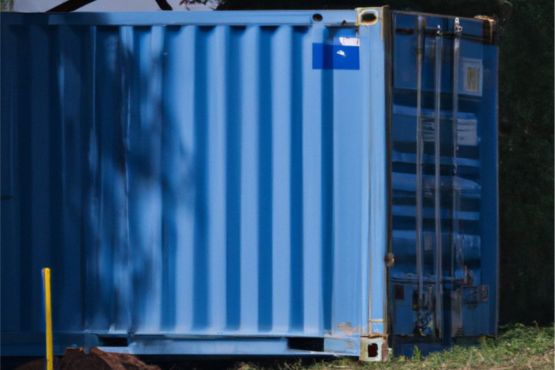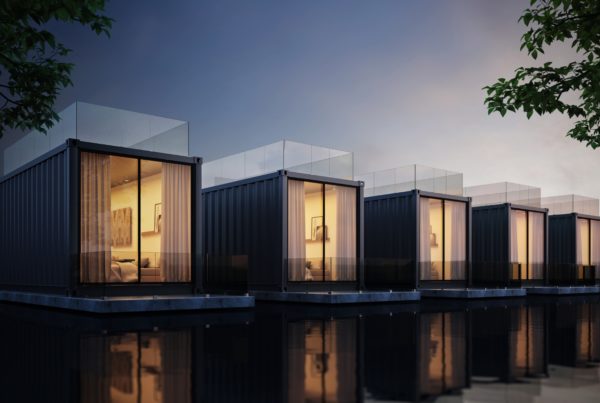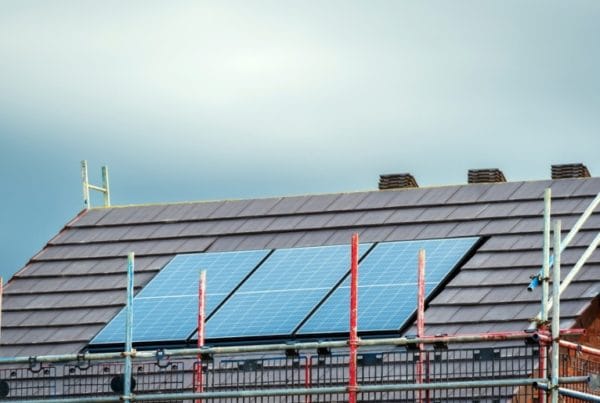Here at Philspace, we’re passionate about banging the drum for the many ways to use different types of shipping containers. From architecture to agriculture to our flexible, self-contained welfare units, we’re always looking for innovative shipping container applications. Whatever problem you’re solving with containers, though, it’s important to make sure you’re using them safely and effectively to get the most out of your investment.
That’s why, in this article, we’ve decided to give some practical advice on the importance of keeping your shipping container cool in summer. Whether you’re using it to store cars, tools or as a rest and recreation space for your staff, keeping your shipping container at a stable and consistent temperature can be of crucial importance.
Why You Should Keep Your Shipping Container Cool in the Summer
Before we look at some useful tips for keeping your shipping container cool this summer, let’s establish why it’s so important. As they’re made out of steel, shipping containers absorb heat quickly, meaning that internal temperatures can rise to over 50 degrees centigrade if left in direct sunlight for extended periods.
Firstly, this can pose significant health and safety risks to any employees expected to work inside the container. While there isn’t a hard, upper limit for the legal temperature employees can be expected to work at, the Health and Safety Executive (HSE) does make certain stipulations. It advises that employers must take meaningful steps to keep temperatures at as comfortable a level as possible while ensuring levels of clean and fresh air are adhered to.
Not only can overheated containers impact your staff’s well-being, but they can also cause damage to stock or equipment in storage or transit. Perishable foodstuffs like meat, seafood and dairy are most at risk, as are paints, soaps and electronics.

Ways to Keep Your Shipping Container Cool in the Summer
Ranging from build quality to insulation and positioning, let’s look at some useful tips for keeping your shipping container cool this summer.
Location
The best way to stop your shipping container from overheating is to simply avoid exposing it to direct heat. If the container is for storage purposes only, such as tools or equipment at a workspace, then consider where you can position it so that it will escape direct sunlight.
Buildings and treelines can provide a good level of shade, and if these aren’t available, consider suspending a tarpaulin over the container to keep its internal temperature down.
Insulation
When we hear the word insulation, we usually think about retaining heat, not reducing it. However, modern insulation systems work equally well at keeping spaces cool, too.
Whether applied to houses, office buildings or containers, insulation works by controlling the transfer of heat. This makes it perfect for retaining a comfortable and safe temperature within your shipping container. So if you want access to a cool shipping container in the summer, we’d recommend adding insulation to the checklist of criteria when purchasing one.
Air Conditioning
If you’re using your shipping container as an office, work or rest and recreation space, keeping a comfortable temperature is vital. To this end, why not consider installing air conditioning in your shipping container? Providing your container is compatible with mains electricity (as our Philspace products are), they can be easily fitted with an air conditioning unit to give much-needed respite to your employees and colleagues.
Prioritise Air Flow
Whether you’re applying your shipping container in storage, transit or as a workplace, arranging the container and its contents in a way that prioritises air flow is an effective and low-cost way to keep the temperature down. Try setting the container on gravel to improve external air circulation. Aim to leave gaps of up to two metres between each container where possible.
In addition, think carefully about the interior layout. Stacking storage items off the floor on shelves or pallets will allow air to pass between them while ensuring that doors and windows are left unobstructed will encourage a cooling breeze.
Use Fluorescent Lights
Fluorescent or LED lights give off substantially less heat than traditional incandescent bulbs. In most instances, such as homes, offices and public buildings, this difference is negligible. However, in a smaller, confined space like a shipping container, constant exposure to incandescent lighting can increase the temperature noticeably. By using a fluorescent or LED bulb, you can help to control heat levels without sacrificing lighting.
Temperature Controlled Containers with Philspace
Whether it’s with our bespoke Refrigeration Units, or our other units featuring full insulation, Philspace containers can ensure that your goods, equipment and employees are kept at a safe and comfortable temperature.
Also known as ‘Reefer’ containers, our Refrigeration Units are ideal for restaurants or events where food needs to be kept at a controlled temperature. Internal heat levels are controlled by a central thermostat and are monitored by an alarm system meaning you don’t have to worry about your food going off.
Our other newer containers are fitted with 25mm ply insulation to the walls and ceilings. This ensures that temperature change remains at a minimum while in transit or in storage. Similarly, our range of toilet block containers benefits from 45mm insulation, ensuring comfort for your employees.
Find out more about the products we offer here, or feel free to contact us for more information.






